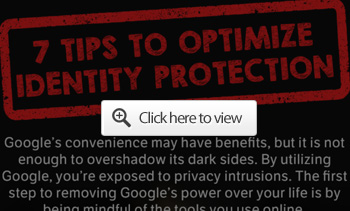High Fiber Foods May Counteract the Effects of Pollution
In this short video, Pan Deng, Ph.D., researcher at the University of Kentucky (UK), describes some of the newest dietary recommendations from the university’s Superfund Research Center to help prevent damage from environmental toxins.1
After environmental disasters such as Love Canal in Niagara Falls, New York in the 1970s, the Environmental Protection Agency established the Comprehensive Environmental Response, Compensation and Liability Act.2 The act is also called Superfund and gives the EPA the financial ability and political authority to address contamination.
The research center at UK hopes to reduce the impact of contamination through two branches of research. The first is environmental to look for means of detection and cleanup of chlorinated organic compounds. The second arm is a biomedical examination of nutritional avenues to reduce the impact on human health.
Deng initially focused her research on cardiovascular disease. She has since moved into investigating disruption in metabolism that affects heart disease that is triggered by chemical toxins.
Heart disease has been the No. 1 cause of death in men and women globally for more than 15 years.3 In the U.S., from 2014 to 2015, the financial burden of this killer disease, when you count both direct and indirect expenses such as job limitations and actual health care expenditures, was $351.2 billion.4
The statistics were based on the total number of cardiovascular diseases in the U.S. including people with stroke, peripheral artery disease, high blood pressure and venous conditions.
The American Heart Association has identified several behaviors and risk factors that increase the potential that you'll experience cardiovascular disease. These include smoking, physical inactivity, poor nutrition, high blood pressure and metabolic syndrome.
Fiber May Reduce Pollution-Induced Heart Disease
Deng finds dietary fiber may also provide a means of offsetting air pollution damage to your cardiovascular system. As she discusses in the video above, the research team has used metabolomics to evaluate how cells respond to external stress.5 Specifically, the team is evaluating exposure from polychlorinated biphenyls (PCBs).
These chemicals were banned 40 years ago but were once used in commercial applications. Currently, they have the potential to leak out of hazardous waste sites like the designated Superfund sites. According to a UK news release, there are 13 active Superfund sites in Kentucky that may include improperly managed manufacturing plants, landfills or mining sites.
Deng has built her research on an association a past scientist from the same lab found between PCBs and heart disease. Her study determined fiber could reduce the damage in several organ systems, including the gut and blood vessels, both related to heart disease. She said:6
“Using animal models, we found that eating a high-fiber diet can prevent pollutant-induced cardiovascular disease. This finding may lead to nutritional and therapeutic interventions in people who are exposed to PCBs.”
The characteristics of PCBs increase their ability to bioaccumulate in the food chain.7 While most people are exposed through food, airborne PCBs can be found in contaminated buildings. And, in contrast to PCBs absorbed through food, inhaled particles are “lower chlorinated, more volatile and subject to metabolic attack.”
Brief Air Pollution Exposure Increases Risk of Heart Attack
One recent study8 sought to determine if there was an association between air pollution and out-of-hospital cardiac arrest when the concentrations of particulate matter were lower than the World Health Organization's guidelines.
Particulate matter (PM) is categorized by the diameter of the pollutant. It may be measured at 2.5 micrometers (µm) (PM2.5) or 10 µm (PM10). If you can imagine, there are about 25,000 microns in an inch and PM2.5 is about 30 times smaller than the diameter of a human hair.9
The study used data gathered in Japan, as the country has excellent pollution and population monitoring processes in place. For instance, the researchers were able to determine the amount of specific pollutants not only on the day of a cardiac arrest, but on one to three days before the event.
Over a two-year period, the researchers recorded 249,372 cardiac arrests that didn’t happen in a hospital. They found those who were older than 65 years had a greater potential for an event than those who were younger with exposure to PM2.5.
The researchers also found that more than 90% of the cardiac events happened on days when the air pollution density was lower than 25 micrograms per cubic meter (μg/m3), the lowest level of safety established by the WHO.10 The data showed that:11
“Short-term exposure to PM2·5 was associated with an increased risk of OHCA even at relatively low concentrations. Regulatory standards and targets need to incorporate the potential health gains from continual air quality improvement even in locations already meeting WHO standards.”
What Defines an Air Pollutant?
Some experts have expressed concern that many people don’t even know how to define what air pollution is.12 The WHO13 identifies four main man-made sources including fossil fuels, industry, agriculture and waste incineration. These pollutants may be found in chemicals in your home, air fresheners and plastics, to name a few.
Health-related damage can begin before birth and add up over your lifetime. Researchers estimate 3.32% of premature births can be attributed to PM2.5, with a financial burden of $5.09 billion, noting:14
“Reducing rates of PTB [preterm birth] is important to prevent not only neonatal complications such as respiratory distress syndrome, sepsis, and intraventricular hemorrhage, but also adverse psychological, behavioral, and educational outcomes in later life, mostly related to cerebral palsy and neurodevelopmental delay.
In addition, preterm babies are at higher risk of developing systemic hypertension, diabetes, and stroke later in life.”
After it enters your system (primarily through breathing it in) PM2.5 causes chronic inflammation that ultimately increases your risk of heart disease and lung disease. In the search to find how air pollution may affect a growing baby in the womb, researchers analyzed human placentas after birth.15
They presented evidence at the European Respiratory Society International Congress of carbon in placental macrophages. These cells are part of the body’s immune system and work by enveloping particles. Dr Norrice Liu, one of the researchers, commented:16
“Our results provide the first evidence that inhaled pollution particles can move from the lungs into the circulation and then to the placenta. We do not know whether the particles we found could also move across into the foetus, but our evidence suggests that this is indeed possible.
We also know that the particles do not need to get into the baby’s body to have an adverse effect, because if they have an effect on the placenta, this will have a direct impact on the foetus.”
This is a stunning finding, especially since we already know that air pollution is responsible for respiratory diseases that kill 543,000 children age 5 and younger each year, according to the WHO.17 Breathing polluted air also causes asthma in 14% of children around the globe.
While many consider car emissions a major culprit in air pollution, you might be astounded to learn that corn is another. Yes, corn. This crop is used for animal feed, ethanol biofuel and food — and it is another, often-overlooked source of air pollution.
In fact, according to research reported in Nature Sustainability, air pollution that results from growing corn is associated with 4,300 premature deaths per year in the U.S. alone, with associated damages estimated at $14 billion to $64 billion.18
Rising Rates of Diabetes May Be Influenced by Pollution
One of the factors that may have earned air pollution the description of the19 "largest environmental cause of disease and premature death in the world today" may be the insidious nature that begins affecting health before birth.
While many acknowledge that air pollution increases the risk of Type 2 diabetes, researchers sought to quantify the number of cases that could be attributed to PM2.5.20
Looking at data taken from a longitudinal study of 1,729,108 U.S. veterans who had no history of diabetes and data from past studies to build a model that might characterize the relationship, they found that, indeed, what you breathe can affect your risk of diabetes, summarizing:21 “The global toll of diabetes attributable to PM2.5 air pollution is significant. Reduction in exposure will yield substantial health benefits.”
Commenting to The Sacramento Bee, assistant professor of medicine at Washington University, Dr. Ziyad Al-Aly, said the overall effects of breathing air pollutants have risks, even at levels lower than accepted by regulatory agencies:22
"We tell people all the time, if you eat bad stuff, it affects your health. You are what you eat, you are what you drink and, really, you are what you breathe. What you breathe really, really affects your health. What we didn’t really know was the magnitude of the problem. We were shocked by the magnitude. In our studies we observed that risk started to manifest at PM 2.5 concentrations above 2.4 microgram/cubic meter."
What’s more, studies have found compelling evidence to suggest that air pollution may also trigger obesity, a contributing factor in diabetes. Data from one study23 showed an association between traffic density and higher body mass index, and a second study24 showed those exposed to the most air pollution were 13.6% heavier than those exposed to the least.
One animal study25 also suggested higher levels of pollution may contribute to higher levels of inflammation, which then could be a mechanism for increased weight gain and metabolic disruption.
Air Pollution Has a Neurological Impact
Higher rates of inflammation after exposure to air pollution may also lead to an increased risk of depression and suicide. For example, one study26 suggests air pollution may reduce sleep quality. Subsequently, there are several consequences associated with sleep deprivation and poor-quality sleep, including a bidirectional relationship with depression.27
Along that same line, PM2.5 particles are important as they are small enough to be absorbed into the bloodstream after being inhaled.28 Once in your body they may deposit in any organ system, including the brain, meaning these particles may hit you with a double threat to your health because you both breathe them and absorb them.
Some of the regrettable consequences of this exposure have been an increase in psychiatric emergency room visits for children after exposure to higher levels of PM2.529 and, on the adult end, an associated risk for Alzheimer’s disease30 and other dementias.31
Food May Reduce Your Body Pollution
In addition to increasing fiber in your meal plan, there are other foods that may help your body efficiently remove toxins you absorb from your food and the environment. Begin by eating whole food that is ideally locally grown, fresh and organic. Processed and prepackaged foodstuffs are a common source of toxic chemicals.
Nutritionists interviewed by The Times of India32 recommend minimizing the effects of pollution by adding broccoli to your daily diet. The beneficial qualities of mature broccoli are enhanced by cooking it. But there is a fine line between cooking and overcooking. Consider the process outlined in “New Finding: Broccoli Helps Heal Leaky Gut.”
An anti-inflammatory tea from ginger and turmeric may help reduce inflammation in your lungs, the nutritionists added. Ensuring your omega-3 and omega-6 ratio is balanced also helps reduce inflammation. Both fats are essential to good health, but most people get more than enough omega-6 from their food.
Wild-caught Alaskan salmon and sardines are two excellent sources of omega-3 fatty acids. My preferred choice for supplementation is krill oil, which you can find more information about in “Your Practical Guide to Omega-3 Benefits and Supplementation.”
from Articles https://ift.tt/2Skkgis
via IFTTT



